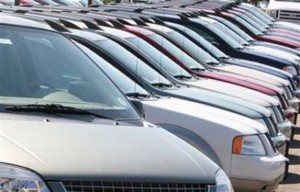Used car prices are expected to fall again in 2015, but in spite of that expectation, they’re rising … just in time for tax refund season.
Analysts from NADA Used Car Guide forecasted used vehicle prices to continually rise by 1-1.5% in February, potentially topping out at a 2.5% increase in March.
“The price bump in the used vehicle market is created by several factors, but one of them has to do with recently filed consumer tax returns,” said Jonathan Banks, NADA Used Car Guide’s executive analyst.
“Americans looking to buy their next car now have the needed funds in the form of tax refund checks. Their purchasing actions will continue to drive demand during the remainder of the quarter.”
The rise in prices is a seasonal event that typically impacts entry-level and compact used cars. These are cars that people expecting a significant tax refund would be looking to buy outright, said Ricky Beggs, senior vice president and editorial director, Black Book, which tracks a variety of data from the used car market.
Beggs agrees with the NADA assessment that prices will fall this year and it’ll be a bigger drop than the market has seen in recent years. He’s predicting a 14 – 14.5% drop this year, which outstrips the 12% range for each of the last three years.
Last year, car buyers paid an average of $11,878 for a 5-year-old used vehicle, according to NADA data.
Beggs noted that the rise in new car sales have increased the supply of good used cars, which helps to lower the prices. Last year, about 3.2 million vehicles came off leases, NADA said, and it expects that number to grow about 1.9 percent this year.
About 25% of all used vehicle sales in 2014 were from leases, Banks said: the highest number since 1999. NADA expects a record number of previously owned cars and trucks will be available by 2017, which coincides with the expected rise in new car sales.
However, Beggs added there are three segments that aren’t likely to be impacted as much in 2015: compact sport-utilities, compact crossovers and large vans.
(Ford brings in Wall Street veteran as global strategy chief. For more, Click Here.)
He noted that compact SUVs, like the Jeep Wrangler or Nissan Xterra, have a loyal following, which helps offset any increase in supply. Additionally, he noted that the compact crossovers, such as the Toyota RAV4, Honda CR-V, Chevy Equinox and Ford Escape will retain their value as well.
“They’re bigger now than ever so they have a lot of functionality,” he said. “They’re pretty fuel efficient for that functionality so there is a demand for them.”
(Click Here for details about the impact of the dockworkers strike on Honda, Nissan and Toyota.)
Beggs noted that the quiet leader, in terms of keeping their value, is the full size van segment. He noted that the vans, such as the Econoline, aren’t being made in large numbers any more – in fact, on General Motors has a large, full-size van still in production.
“They’re hotter than a firecracker,” Beggs said. “They have been since last March.”
(To see more about Britain’s four autonomous vehicle programs, Click Here.)
He noted that when the price of a three-year old full-size van is compared to that of a new Euro-style van, the older van wins out almost every time for commercial business owners.

